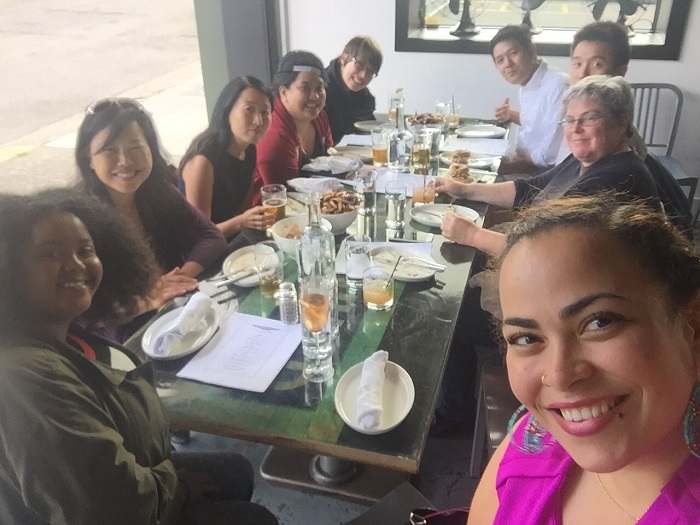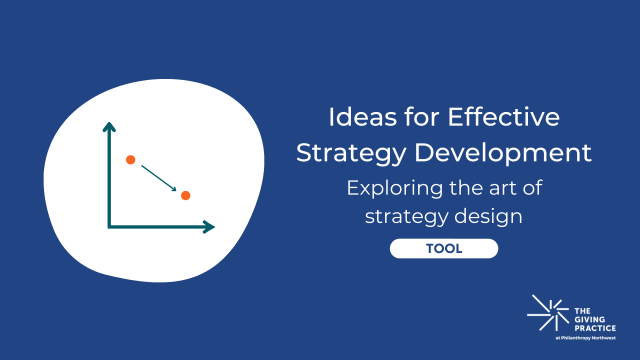[Editor's Note, Nov. 1, 2016: Vu Le will be speaking at our Fall 2016 Philanthropy Institute: Skills for Emerging Practitioners workshop next week. Space is limited!]
As more than 200 funders head to Philanthropy Northwest's 2016 conference in Missoula this week, we asked Vu Le, humor writer at Nonprofit With Balls and executive director of Seattle's Rainier Valley Corps, to share his insights into what makes Northwest philanthropy unique.
In the past few months, I have been traveling around the country, speaking with different funders and nonprofit professionals and, when possible, collecting free pens from conference exhibitors for my nonprofit in Seattle, Rainier Valley Corps. Through all the traveling and conversations, I’ve noticed a few differences between Pacific Northwest funders and other funders — some of which are exciting, while others are worrisome. These are all observations from my own perspective, with little formal data behind them and thus subject to biases influenced by the people I’ve talked to and worked with. Please feel free to disagree and push back. I am hoping by discussing what makes Northwest philanthropy unique, we can focus on building on our strengths, minimizing our weaknesses and allowing nonprofits and funders to more effectively reach our goals of building a stronger community.
What Makes Northwest Philanthropy Unique?
- The outsized influence of the tech sector. We have huge tech companies here like Microsoft, Boeing, Amazon and Google. As this sector grows, tech employees have been exerting more influence on philanthropy. Often this has been leading to creative new ideas, or “innovation” and “disruption,” as our tech friends would call it. This usually comes with an increased embrace in failure, which is an important part of learning and essential to the work of solving complex societal challenges. These positive elements, however, often get overwhelmed by the arrogance of the tech sector. As I wrote in a previous post, there is the assumption among many board members, funders and donors that many of society’s issues can be solved with a tech mindset. The problem is that by default the tech sector relies on technical solutions, while the challenges our community members face often require adaptive solutions, which involves a much more complex amalgamation of factors such as historical trauma, cultural diversity, systemic inequity, race and gender dynamics, etc. We cannot just take the same strategy and mindset we use to build a computer operating system and apply it to homelessness or domestic violence. It doesn’t work.
- The dynamics of new money. One thing I learned traveling to the East Coast is the concept of “old money” vs. “new money.” Because the Northwest region was settled later in the history of the U.S., we have less old money and more new. Sociologists can illuminate the differences, but from the people I’ve talked to, old-money funders are influenced more by established relationships, whereas new-money funders focus more on technical factors like data and track records. Relatively new foundations must prove themselves more — so they rely more on outcomes, metrics, data, strategies, etc. These things then get pushed down to nonprofits, creating more burdens on those of us trying to do the work on the ground.
- The gravitational pull of larger funders. The Northwest is home to the biggest private foundation in the world [the Bill & Melinda Gates Foundation], along with several other sizeable funders and lots of resources. But my colleagues and I have noticed that foundations are like astronomical objects — the larger the foundation, the stronger its gravitational pull on other objects surrounding it. This is often good when it comes to aligning funding around certain efforts to increase their momentum. But sometimes the gravitational pull is so strong that it is impossible for smaller moons and asteroids to escape and carve a different path, even if the original path does not seem to be leading anywhere.
- The penchant for process. We in the Northwest seem to really love process, which includes meetings, planning, research, consensus, white papers, webinars, summits, peer learning circles — in short, everything except sometimes just doing stuff, maybe screwing up a few times, and doing more stuff. Process is good, but it can be excessive here. We end up wasting a lot of time that can be used to pilot actions and learning by doing. Worse, communities, especially communities of color, are getting tired of and jaded by filling out more surveys, attending more focus groups and putting up more dots on easel paper.
- The siren song of strategic philanthropy. As mentioned in several articles over the past couple of years, the concept of "strategic philanthropy" needs to be seriously reexamined. This philosophy, which has forced nonprofits to conform to funders’ rigid strategies, ignoring the fact that societal issues are complex and cannot be wedged into neat funding priorities, has been shown to be ineffective and often harmful to nonprofits and their work. Because of the factors listed above and others, it seems we in the Northwest are even more susceptible to the siren song of strategic philanthropy, and thus it will take us longer to untangle ourselves from its clutches.

The Pacific Northwest is an amazing place filled with brilliant and generous people, dedicated nonprofits and a robust array of foundations. We have the potential to pave the way for a different and more effective type of philanthropy that takes into consideration the profound complexity of the challenges we are all trying to address. But first, we need to reexamine our strengths as well as the elements holding us back. Through Philanthropy Northwest's conference this week and meetings with funders, nonprofits and community leaders throughout the year, we have the opportunity to move forward together.
Vu Le is the executive director of Rainier Valley Corps, whose work is to address systemic inequity by developing nonprofit leaders of color, strengthening the capacity of nonprofits led by communities of color, and fostering collaboration between diverse communities. He's also the writer behind nonprofitwithballs.com.



Comments
Very accurate observations,
Very accurate observations, Vu
I have been in the non-profit
I have been in the non-profit arena since 2000 and couldn't agree with you more. It will take some bold moves and some flexibility to change course during a granting cycle if we are to tackle the complex issues facing our communities today. I think too much emphasis is paid to following the plan which often lands us in the status quo once again. I work in the area of human services with wrap around services at The Giving Tree. www.thegivingtreenw.org
Thanks for your astute
Thanks for your astute observations, Vu. As you've shown, the "Northwest bubble" can be limiting to our vision and scope, and we need more of our foundation EDs, CEOs and program officers to travel to see how other cities are running their operations. Those trips should be viewed by trustees and donors as integral to the foundation's mission, and not merely a junket networking exchange.